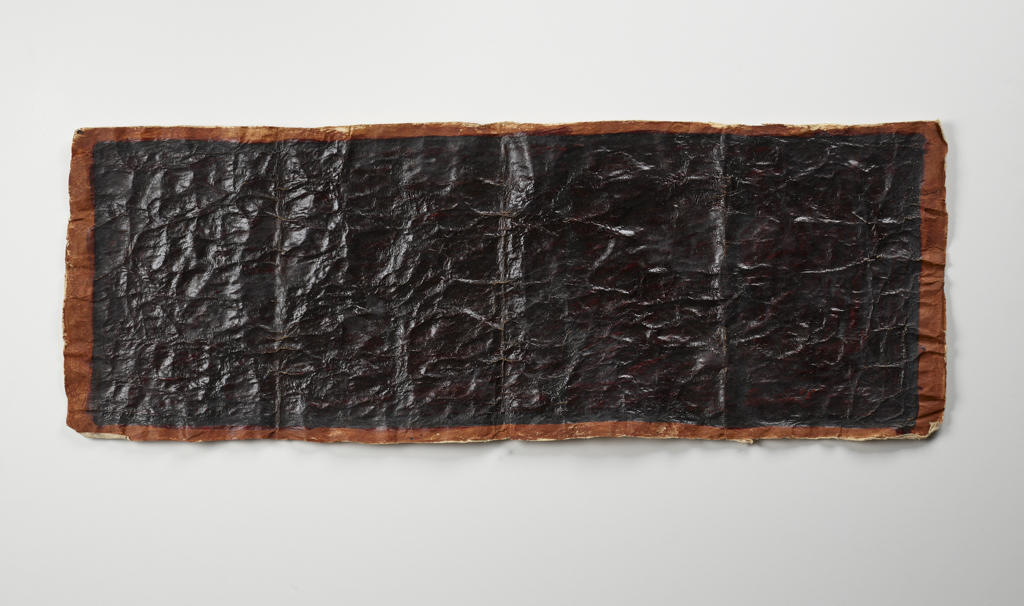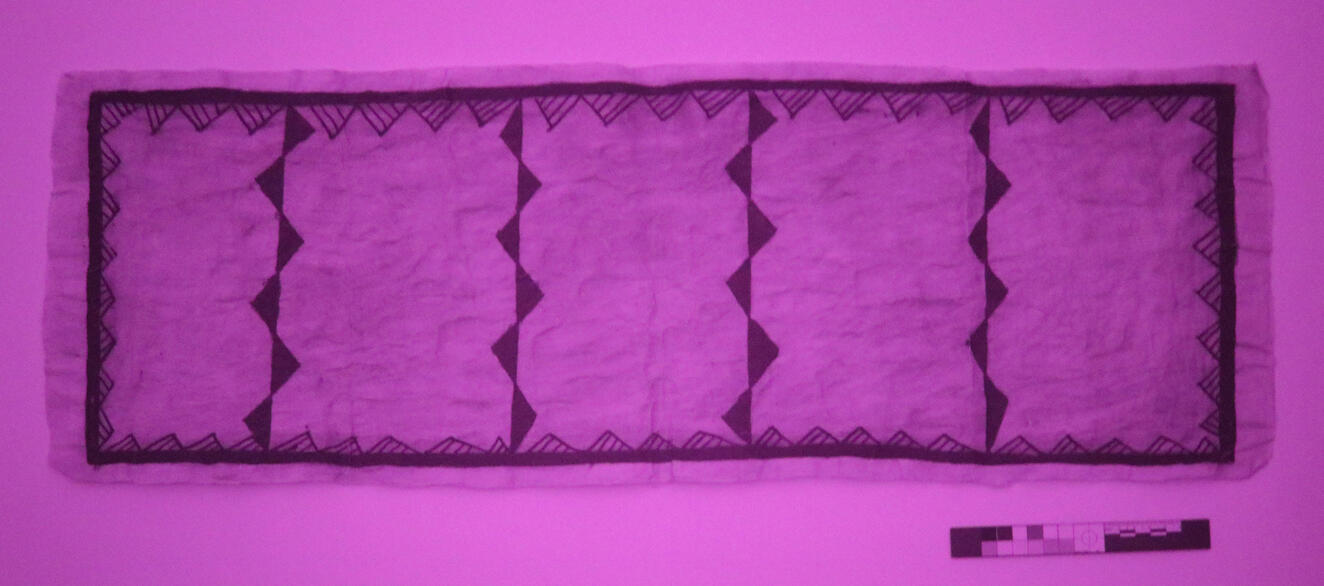Across Polynesia, the art of creating fine bark cloth textiles is described by different words in many languages. In Samoa, this important artistic practice is called siapo. Spanning generations, siapo is one of the oldest traditions in Samoa, imbued with an enormous amount of cultural significance. While the textiles themselves are a beautiful demonstration of Samoan skill and heritage, the labor-intensive preparation of materials is an equally important testament to the mastery and virtuosity of siapo-makers.
There is an enormous breadth to the decorative elements, sizes, and use of bark cloth textiles across Polynesia. In Samoa, many siapo are used in daily life, as mats or bedding, as well as in ceremonial clothing. Though siapo is a complex art form with a large amount of variation, there are basic components of most Samoan examples. The cloth that functions as the siapo-maker’s canvas, u’a, is made from the bark of the paper mulberry tree. The process of transforming the bark involves a series of steps, including the harvesting, soaking, and beating of the bark. The efforts of the artist ultimately thin and widen the bark into a sheet. From there, different dyes of various colors and properties are harvested from nature. This article will largely focus on the effects of time on o’a, a brown dye taken from the bark of the blood tree, or the Bishofia Javanica.
The appearance of o’a on bark cloth begins as a light tan color but darkens over time to a glossy dark brown. This process can continue to a point at which the o’a actually seeps over the surface and overtakes the original patterns and designs. However, infrared camera technology can allow these invisible designs to be viewed and interpreted once more.
To briefly introduce infrared photography, light exists in forms that are both visible and invisible to the human eye. While visible light explains the colors we see every day—for example, why the sky is blue or the grass is green—infrared (IR) light cannot be seen by the naked eye, but rather is felt as heat. Infrared photography allows us to detect and differentiate the level of IR light emitted by every object.
While a typical camera has lenses that block IR light (as it could damage the camera), special lenses can be made or altered to detect the different heat emissions across an object. This means that differences in heat can be measured and converted into an image. So if, for example, a siapo textile has large swaths of o’a that have overtaken the original design, an IR-capable camera could still distinguish the thermal emissions of now-invisible patterns.
This process was employed to reexamine a siapo work that has been a part of the RISD Museum’s collection since 1946. Using a MaxMax modified Canon UV-VIS-IR camera (an IR-capable camera), an image of the textile under infrared light was produced. The following two images show the textile first as it appears to the human eye and second as it appears under an IR camera.
The original pattern, visible with an IR camera, has been overtaken by the darkening of the o’a. The new visual information from this image allows the siapo to be reinterpreted and seen again as it originally appeared.
Traditional Samoan siapo artists Su'a Uilisone Fitiao and Regina Meredith Fitiao were able to offer some insight into the patterns seen by the IR camera. The triangular shapes were explained to be Faaaliao or trochus shells, a common siapo motif. Tusili’i, or the small lines, are another motif visible in this photo. Moreover, Regina was able to suggest that the o’a is likely mixed with the soot of the candlenut, giving it a darker appearance. New information like this not only deepens our understanding, but allows the viewers to fully appreciate what they can see in a traditional siapo work like this.
This is an important example of the impact that infrared technology can have in the examination of art. A simple photograph allows our human eyes to once again see and examine the thoughtful and artistic designs that originally covered this beautiful example of Samoan siapo.
For further reading about siapo, visit:
National Park Service, "Siapo: The Traditional Fabric of the Samoa Islands"
Tauiliili, Paul, et al, "Patterns in the art of Samoan Siapo"
Sylvie Adams was the 2022 Mellon Summer Intern in Costume & Textiles Conservation. Sylvie is a sophomore at Boston University studying art history and chemistry.

